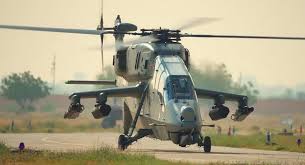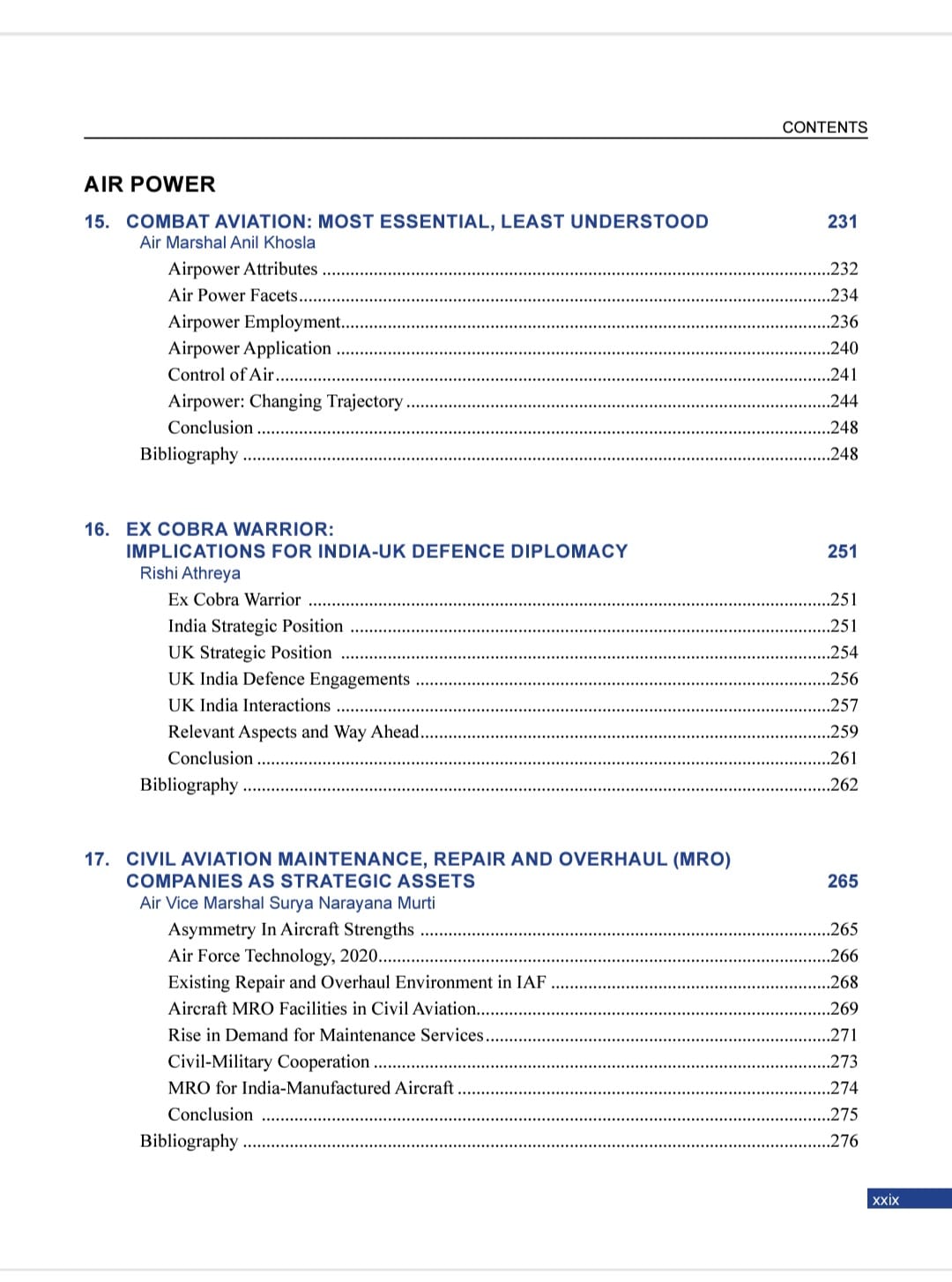
My Article published on the Chanakya Forum
In mid-June, news channels and strategic community circles were abuzz with the news that the Ministry of Defence, Government of India, had issued an RFP for the procurement of 156 Light Combat Helicopters (90 for the Indian Army and 66 for the Indian Air Force). LCH is the first indigenous Multi-Role Combat Helicopter designed and manufactured by Hindustan Aeronautics Limited (HAL). “Prachand” (which means “fierce” in Hindi), the name given to India’s LCH, reflects the helicopter’s aggressive and powerful capabilities. It stands out with its ground attack and aerial combat capability, setting it apart from other helicopters in the market. Other attack helicopters and armed helicopters (held in the Indian armed forces inventory) are severely limited in operating at high altitudes and are best suited for operations in lower terrains.
HAL has thus far manufactured 15 limited-series Prachand helicopters (10 for the IAF and 5 for the IA), already in service from 2021 onwards. The new procurement order will enhance the operational capability of the Indian defence forces and further boost India’s drive for self-reliance. Reviewing the aircraft (features, performance, capabilities, and roles) and the project (development, production capabilities, Indigenous content, etc.) will be worthwhile.
Development Project. The need for such a helicopter was felt by the Indian armed forces during the Kargil conflict in 1999 when they were required to dislodge intruding Pakistani forces entrenched at altitudes around 18,000 feet. HAL started developing the LCH in the early 2000s, unveiling its plan to build the LCH in 2006. The Indian government sanctioned the project in the same year. The first flight on a prototype on 29 March 2010 was followed by an extensive test programme on four prototypes. The LCH became the first attack helicopter to land in Siachen at altitudes as high as 15,800 feet (4,815 metres). The LCH received a certificate of basic configuration in October 2015 and achieved initial operational clearance in August 2017.
Induction. The LCH was developed to meet the requirements of the Indian Air Force and the Indian Army. In August 2017, limited-series production began for 15 aircraft. In January 2019, after completing all weapon integration tests, HAL declared the LCH ready for operational induction. On November 19, 2021, the LCH was formally handed over to IAF, starting the process of full-scale induction. On October 03, 2022, the LCH was formally inducted into the IAF and was officially named ‘Prachand’. By November 2022, the IA had begun receiving its LCH. The Ministry of Defence (MoD) has now given preliminary approval to acquire 156 more Light Combat Helicopters.

Features. The LCH, an attack helicopter derived from a weaponised version of the HAL-manufactured Dhruv helicopter ‘Rudra’, is a light and agile machine with a unique feature that sets it apart from any other combat helicopter in the world: its ability to operate at high altitudes. This is a significant advantage, as it allows the LCH to operate effectively in the mountainous terrain of the Himalayas, a crucial area for India’s defence strategy. The helicopter possesses modern stealth characteristics, robust armour protection, advanced weapon systems, and electronic warfare systems. Its performance characteristics and features are as follows, showcasing its unique and impressive capabilities:
-
- Performance. The LCH is designed for high-altitude operations, with a service ceiling of about 6,500 meters (21,300 feet), the highest among all attack helicopters worldwide. It has a maximum Take-off Weight of around 5,800 kg and can carry 700 kg of payload. The helicopter can cruise at 260km/h and achieve a maximum speed of 268km/h. With a range of 550 km with weapons, it can fly for about 3 hours, showcasing its impressive performance capabilities.
-
- Armament. The LCH has a chin-mounted and twin-barrel M621 20mm cannon on a Nexter THL-20 turret, integrated with the Helmet Mounted Sighting System. Its modular design allows it to be armed with various weapons, including air-to-air and air-to-ground missiles, rocket pods, iron bombs, cluster bombs, and grenade launchers. This versatility in carrying different weapons makes the LCH suitable for various missions, from air-to-air combat to ground attack. It has four hardpoints capable of carrying a combination of multiple weapons. It is also equipped with a Forges de Zeebrugge-built FZ231 rocket launcher capable of carrying 70mm rockets, MBDA air-to-air, air-to-surface, anti-radiation missiles, and Helina anti-tank guided missiles (Dhruvastra).
-
- Engine: The helicopter is powered by two HAL/Turbomeca Shakti turboshaft engines, each of which can generate approximately 1000kW and has a Full Authority Digital Electronic Control system (FADEC). The French Turbomeca and HAL jointly developed the Shakti engine, which was also fitted on the Dhruv and Rudra helicopters.
-
- Advanced Technology (Sensors and Avionics): The helicopter features a glass cockpit, a composite airframe structure, and a state-of-the-art sensor suite, enhancing operational efficiency and durability. The glass cockpit accommodates two crew members in tandem. It has an Integrated Avionics Display System (IADS), multi-function displays, a target acquisition and designation system (TADS) with FLIR (laser range finder and a designator), a helmet-mounted sight and a digital video recorder to capture battlefield footage for debriefing. The sensors fitted on the helicopter include a charge-coupled device camera, a forward-looking infrared camera and a laser designator. The two cameras capture the enemy’s location and position. The targeting system features an electro-optical pod, helmet-mounted sight display (HMSD), and a laser range finder and designator for precise targeting and engagement. The LCH is also equipped with a data link for network-centric operations.
-
- Survivability: The helicopter has numerous features to increase its survivability, including stealth features to reduce radar and infrared signatures. It has systems like Radar warning receivers (RWR), missile approach warning systems, laser warning systems, and chaff and flare dispensers for self-protection. The helicopter also has engine exhaust Infra-Red Suppression Systems (IRSS). The IRSS enhances aircraft resilience against IR-guided missiles by diminishing the missile lock-on distance and facilitating the superior functioning of IR jammers and flares. It has several other protection features, such as armour protection, self-sealing fuel tanks, a digital camouflage system, and crashworthy landing gear to enhance its survivability in hostile environments. The pressurised cabin of the helicopter offers protection from Nuclear, Biological and Chemical (NBC) attacks.
-
- Versatility and Agility: The features above allow LCH to perform numerous roles under all weather and day-night conditions. Its narrow fuselage and advanced aerodynamics provide high agility, making it difficult to detect and target. The specially designed hinge-less rotor makes it highly agile due to its immediate response to flight control commands.
Roles and Tasks. The LCH meets the requirements of modern warfare and has the capability parameters to operate under varied conditions. Equipped with advanced systems and various weapons, it can perform multiple combat and support roles. In attack roles, it can undertake missions like the destruction of enemy air defence (DEAD), anti-tank warfare, battlefield air support, interdiction, and counter-surface force operations. It is capable of battlefield reconnaissance and target acquisition. It can also be used to escort convoys and provide aerial coverage. The LCH can track and attack slow-moving aerial targets and remotely piloted aircraft. It is also effective in counter-insurgency operations in jungle and urban environments.
Capability Enhancement. The LCH’s versatility and offensive potential are at par or better than most attack helicopters operating globally. Its presence itself deters adversaries. The induction of the Light Combat Helicopter adds unique capability to India’s combat potential. The LCH is noted for its capability to operate at high altitudes up to 6,500 meters, making it particularly suitable for operations in mountainous regions like the Himalayas along India’s northern and northeastern borders. This versatility, along with advanced avionics and weaponry, makes the LCH a force multiplier, significantly enhancing the combat capabilities of the Indian armed forces. It is a potent platform with day and night ground attack and aerial combat capability. It is a game changer, reflecting its multiple capabilities and strategic importance. It offers strategic flexibility through rapid deployment, allowing quick responses to emerging threats. The helicopter’s data link will mesh into the IAF’s networked environment.
Self-reliance and Challenges. Being an Indigenous platform developed by Hindustan Aeronautics Limited (HAL), the LCH reduces reliance on foreign military technology and supports India’s defence industry. With the Indian thrust on indigenisation, the LCH is being developed under a public-private partnership model, with the active participation of the private sector. There is still much left to be achieved regarding self-reliance. The LCH reportedly has an indigenous content of 45% by value, which is likely to progressively increase to more than 55%. The development of indigenous engines is the foremost challenge. Developing an aircraft engine is tough and expensive; it requires considerable investment in R&D and sustained effort over many years. These helicopters are on one of the government’s positive indigenisation lists. The list bans importing weapons, systems, and ammunition. Integration of Indigenous Anti-Tank Guided Missiles is another challenge. Helina/Dhruvastra, a helicopter version of the Nag missile, has already been tested on ALH (Rudra) and is in the process of integration with LCH. Next on the list is the challenge of production rate. The new order of 156 LCH aircraft will likely take 5 to 6 years to complete.
The induction of an additional 156 LCH is a significant development. The LCH’s high-altitude operational capability, advanced avionics, versatile armament, and Indigenous development make it a crucial asset for India’s defence forces. Its ability to operate in challenging terrains and perform multiple combat roles effectively positions it as a game changer in modern warfare, particularly in India’s unique geographic and strategic challenges.
Suggestions and value additions are most welcome.
Link to the article on Chanakya website: -https://chanakyaforum.com/prachand-the-himalayan-griffin/
For regular updates, please register here:-
References and credits
To all the online sites and channels.
References:-
- Air Chief Marshal Fali H Major (retd), “Why India’s Light Combat Helicopter could be a game changer”, DailyO, 28 Feb 2020.
- Air Marshal Anil Chopra (Retd), “Rotary Wing Platforms: India’s Great Indigenisation Story”, Indian Defence Review, Issue Vol. 38.1, Jan-Mar 2023, 13 Apr 2023.
- “Ten reasons why indigenously-built Light Combat Helicopter is a game changer for the Indian Air Force”, India News Network, 04 Apr 2022.
- Rahul Singh, “Govt to buy 156 light combat helicopters from HAL at ₹50k-cr”, Hindustan Times, 18 Jun 2024.
- D Raghunandan, “India’s Combat Helicopter: Re-discovering Self-reliance?”, NEWSclick, 14 Oct 2022.
- Lt Gen (Retd) BS Pawar, “Induction of ‘Prachand’ Light Combat Helicopter: Impact on Operations At High Altitudes”, Bharat Shakti, 13 Jan 2024.
- “HAL Light Combat Helicopter (LCH)”, Air Force Technology, 18 Apr 2024.
- Ministry of Defence, “Indigenously Designed and Developed Light Combat Helicopter (LCH) inducted into Indian Air Force”, Press Release, 03 OCT 2022.
- Gordon Arthur, “India advances light attack helicopter program with large tender”, Air Warfare, 21 Jun 2024.
- Huma Siddiqui, “MoD Issues RFP for 156 Prachand Helicopters to HAL for IAF and Army”, Financial Express, 20 Jun 2024.
Disclaimer:
Information and data included in the blog are for educational & non-commercial purposes only and have been carefully adapted, excerpted, or edited from reliable and accurate sources. All copyrighted material belongs to respective owners and is provided only for wider dissemination.





